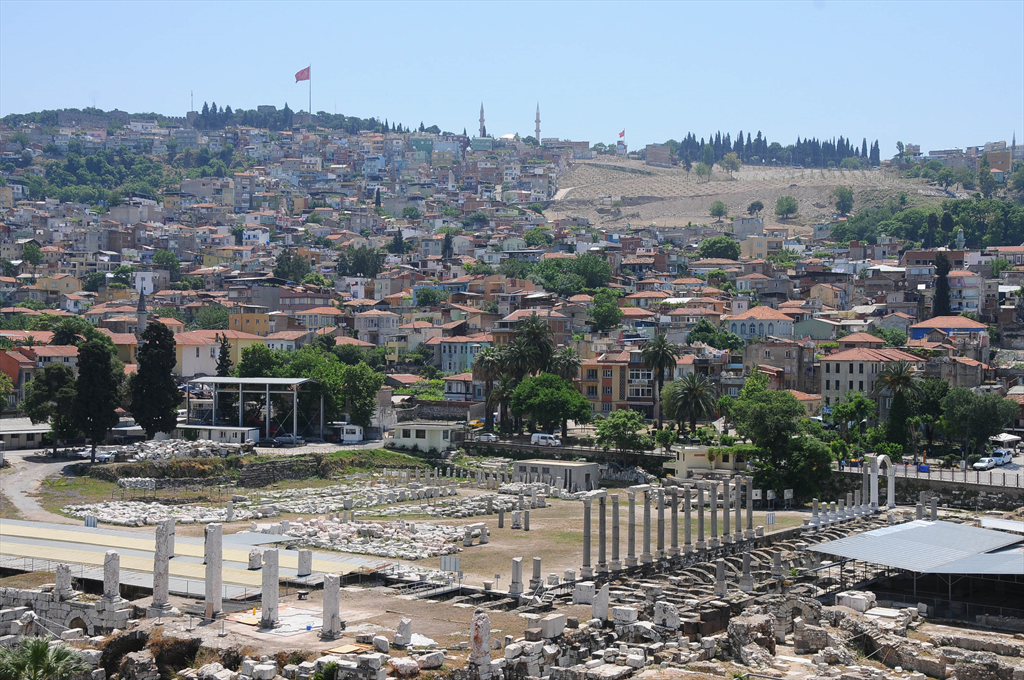Agora of Smyrna
Located in the heart of the historic city center of İzmir, Smyrna Agora is one of the world's largest. Excavation work on the site first began in 1933. In 2007, Prof. Akın Ersoy (of İzmir Katip Çelebi University) and his team of archaeologists revisited the Agora and have remained there ever since - with permission of the Republic of Türkiye Ministry of Culture and Tourism. So far, they have uncovered a west portico, a basilica, a Bouleuterion, a mosaic hall, a Roman bath, and a building from the Ottoman era that surrounds its courtyard.
It was founded at the end of the 4th Century BC immediately following the reign of Alexander the Great. It served as Smyrna's administrative, political, and judicial center and the main hub of commerce and trade. Surrounded by porticos, it used to contain monuments meant for important occasions and agreements, altars for pagan religious ceremonies, statues honoring prominent local figures, exedras with marble seat, and both a temple and altar for the city's patron deity.
A major earthquake destroyed the Agora in 178 AD. Shortly thereafter, the Roman emperor Marcus Aurelius set about rebuilding it. Nearly all surviving remains belong to that second period. Its overall character only remained intact until the 7th Century. Over time, it began to lose its luster as Smyrna shrank. Its courtyard moreover ended up being used as a cemetery during the Middle and Late Byzantine alongside the Ottoman Empires. The Ottomans moreover converted any surrounding buildings into dwellings - a tradition that would last until the end of the 20th Century.
Smyrna/İzmir has remained a major Mediterranean port city since antiquity. In Ottoman times, the Agora and its environs played host to a bustling commercial life, as well as dozens of different ethnic and faith communities scattered across several neighborhoods.
Agora and İzmir (as a historical port city) were added to UNESCO's World Heritage Tentative List back in April 2020
After the 7th century C.E., Agora became obsolete in line with the city growing smaller in size. Over time, during the mid and late Byzantine period, the yard section became a cemetery. During the Period of Principalities, this part has become an abandoned area between Christians settled around Harbour Castle, and Turks living in Kadifekale.
After Turks have conquered the city completely in early 15th century, cemetery at Agora yard tradition was taken over by Turks and carried on until late 19th century. In the Ottoman period, Agora and the surrounding area were used as open-air prayer places.
The first archaeological excavation in Smyrna was conducted between 1933 and 1941. An ongoing excavation project in Smyrna Agora, Altinpark, and Kadifekale was started in 2007.

.jpg)
.jpg)
.png)




.jpg)
.jpg)
.png)


Comments
No comment left, would you like to comment?